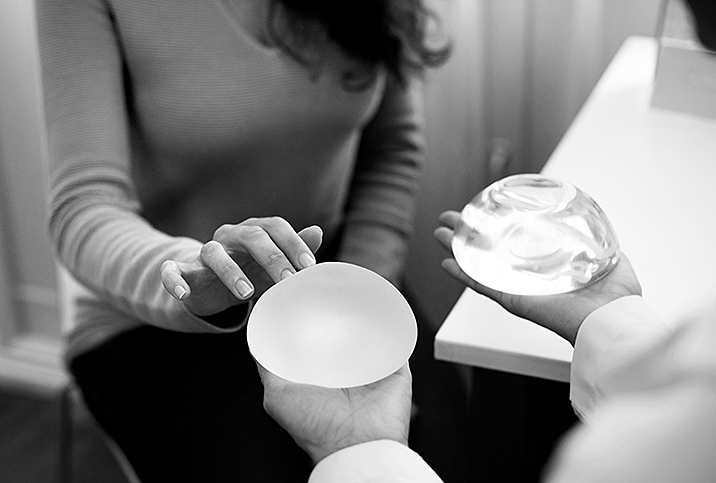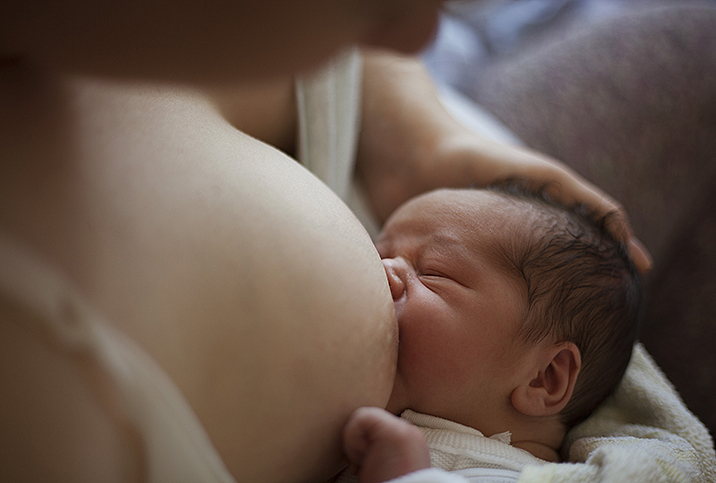Breast Reduction: Benefits and Risks

Ever gone for a run, swung a 5-iron at a golf ball, done a few jumping jacks, tried to buy a trendy blouse or endured a wolfish whistle from some jerk, and thought, “Wow, wouldn’t life be easier without boobs?”
Maybe you’ve experienced excruciating back pain from the weight of your breasts, or found they keep you from effectively exercising or doing other daily activities.
Whether it’s for medical purposes, to align with an aesthetic goal or simply personal preference, breast reduction surgery could be a path to consider. It’s not a minor surgery, but for certain women, it can be a life-changing experience.
Breast reduction
Breast reduction—the medical term is reduction mammoplasty, or simply mammoplasty—is a surgical procedure in which breast tissue and skin are removed to reshape the breasts and achieve the desired smaller size.
Smaller breasts might be a look that a woman feels is more proportional to her body, which in turn may increase physical comfort and emotional confidence. The procedure can also correct breast asymmetry and breast hypertrophy (disproportionate or excessively large and heavy breasts).
Learn everything you can about the procedures: pros and cons, risks and benefits.
A breast reduction may be performed on an in- or outpatient basis, at a hospital or a surgical center, by a board-certified plastic surgeon, with a recovery time of generally one to four weeks. Surgeons use one of three different procedures: anchor, vertical or scarless. You and your doctor will discuss which is most appropriate for you.
Reasons for breast reduction
Women with very large or heavy breasts can experience significant pain in their back and spine due to the added weight. Additionally, skin irritation and even numbness can result from tight bras and other garments that hold oversize breasts in place.
For some women, the weight of their breasts makes something as essential as breathing difficult. Large breasts can also make working out awkward and even impede daily activities. Women with significant breast asymmetry and/or extremely large breasts often struggle with related emotional problems, such as body confidence issues.
On the other hand, like any cosmetic surgery, some women may get a breast reduction simply because they want to do so. Your own personal reasoning around whether or not to get the procedure may vary from someone else’s. The choice is entirely personal.
Risks, downsides & scars
As with any major operation, medical risks during and after surgery are various: infection, changes in breast or nipple sensation (temporary or permanent), hematoma, blood clots, pain, fluid accumulation, damage to arteries or veins, and cardiac issues. In some cases, a second revisional surgery may be necessary.
Breast reduction surgery can reduce chronic neck and back pain, skin irritation, sore muscles, stasis ulcers, numbness and breathing difficulties.
For most women, scars fade significantly after a year or more. However, in some cases, scarring can be pronounced, even forming firm, rubbery lesions called keloids. This is a particular problem for women of color, who are seven times more likely to develop them along the surgery line.
Another important downside: Breast reduction surgery may impact a woman’s ability to breastfeed.
While the surgery is meant to be permanent, pregnancy or excessive weight gain can alter breast size after the surgery.
Alternatives to breast reduction
Liposuction is a less invasive option to reduce breast size, although it is not viable for smaller women with large breasts who have less fat to suction.
Also, take into account that liposuction does not remove excess skin and can therefore result in a saggy, “empty” look. When it comes to asymmetry, the appearance of the smaller breast can be improved by fat implants as well as saline or silicone implants.
Benefits
Breast reduction surgery can reduce chronic neck and back pain, skin irritation, sore muscles, stasis ulcers, numbness and breathing difficulties. The nipple typically is moved up during surgery, meaning you’re getting not just a reduction but also a breast lift.
It’s no wonder a lot of women consider the surgery. In fact, according to plastic surgeon Steve Bernard, M.D., of the Cleveland Clinic, breast reduction surgeries have the highest satisfaction rates of all the surgeries his department performs.
How to take action
If you’re considering breast reduction, talk to your doctor and ask questions—a lot of questions. Learn everything you can about the procedures: pros and cons, risks and benefits. Get references, ideally from a doctor, for a good plastic surgeon or plastic surgery department. Arrange a consultation with a plastic surgeon, or even two, because getting a second opinion is always smart.
Look at before-and-after pictures of many women who have undergone the procedure, so you have realistic expectations for your potential results. Read online posts from women who’ve undergone the surgery. Try talking to one of them directly if you can. The more information you have, the better off you’ll be.
Whether it’s for medical purposes, to align with an aesthetic goal or simply personal preference, breast reduction surgery could be a path to consider.
If you’re in a long-term relationship, talk to your partner about why you want to make this choice. One of the biggest concerns for women is how partners will perceive their new breasts and whether the scars will be a barrier or a turnoff in their sex life. If you know your partner supports you, these fears can be lessened.
In the end, the decision is entirely yours, but you’ll feel freer to make it if you know all the facts. It’s your body and you have to live in it. That body should be the one you want.


















